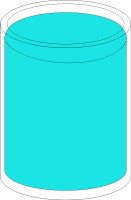Floating and sinking: Difference between revisions
From OER in Education
JanetBlair (talk | contribs) (added Floors and Pillars to related resources) |
JanetBlair (talk | contribs) No edit summary |
||
| Line 20: | Line 20: | ||
|useful information= | |useful information= | ||
|related resources= | |related resources= | ||
*[[ | *[[What makes a good paper airplane?]] | ||
*[[ | *[[The Elephant on the Bridge]] | ||
*[[Bridges| Building bridges from a piece of A4 paper]] | *[[Bridges| Building bridges from a piece of A4 paper]] | ||
*[[Which material makes a good parachute| Which material makes a good parachute?]] | *[[Which material makes a good parachute| Which material makes a good parachute?]] | ||
*[[ | *[[Forces in Static Situations]] | ||
*[[Floors and Pillars]] | *[[Floors and Pillars]] | ||
|other= | |other= | ||
Revision as of 16:35, 4 October 2012
Is getting in the bath a way to lose weight?
Lesson idea. Idea for an activity based on materials that float and sink; also mass in air and mass when there is an upthrust.
Teaching approach. This activity supports a number of learning types:
- small group work(ta) - investigation conducted by small groups reporting back to the class.
- whole class(ta) dialogue(ta) - discussion of each situation open-ended questions(ta) – why did this happen? what do you think causes this movement?
- peer assessment(ta) – do peers agree?
- project work – linked in with the rest of the activities in this OER, topic work in design and technology, literacy, numeracy.
- inquiry(ta)-based learning – initial presentation to the class can be framed as a problem for them to solve; co-enquiry – children working collaboratively
- arguing and reasoning(ta) – persuading each other of their explanations.
- exploring ideas – developing understanding of key scientific principles.
(edit)
| Resource details | |
| Title | What floats and what sinks |
| Topic | [[Topics/Force|Force]] |
| Teaching approach | [[Teaching Approaches/Assessment|Assessment]], [[Teaching Approaches/Dialogue|Dialogue]], [[Teaching Approaches/Questioning|Questioning]], [[Teaching Approaches/Whole class|Whole class]], [[Teaching Approaches/Group work|Group work]], [[Teaching Approaches/Inquiry|Inquiry]], [[Teaching Approaches/Reasoning|Reasoning]] |
| Learning Objectives |
|
| Subject | [[Resources/Science|Science]] |
| Age of students / grade | [[Resources/Primary|Primary]]
|
| Related ORBIT Wiki Resources | |
| Files and resources to view and download |
|
| Acknowledgement | This resource was adapted from resources and original ideas contributed by Paul Warwick, at the Faculty of Education, University of Cambridge. |

